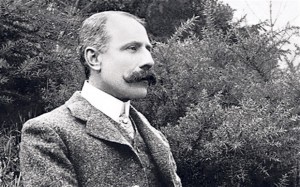Physical exercise was seen as therapeutic for mental illness, and the staff at insane asylums employed it in many ways. Patients often labored in asylum gardens and farms, took walks, joined in exercise programs, or otherwise used their bodies in healthful ways. Dancing was one type of movement that asylum managers used for entertainment, reward, and healing. Dancing not only released pent-up energy in an enjoyable way, but it also allowed patients a measure of self-expression. Some who participated in group dances were also able to form social bonds that helped them endure their stay in an asylum.
Composer Edward Elgar began his career at the Worcester County and City Lunatic Asylum in Powick, England in 1879, at age 21. As bandmaster, he composed many polkas, quadrilles, and minuets for the asylum’s 22-piece (asylum-staff) band; his music was “cheerful, charming, and appropriate to its setting.” Additionally, he and the band gave concerts that also brought the patients enjoyment. Later in his career, Elgar liked to shock listeners by referring to “when I was at the lunatic asylum.”
Though he wrote no masterpieces during the five years he composed pieces at the Worcester Asylum, he later went on to write the Enigma Variations and the Pomp and Circumstances Marches.


